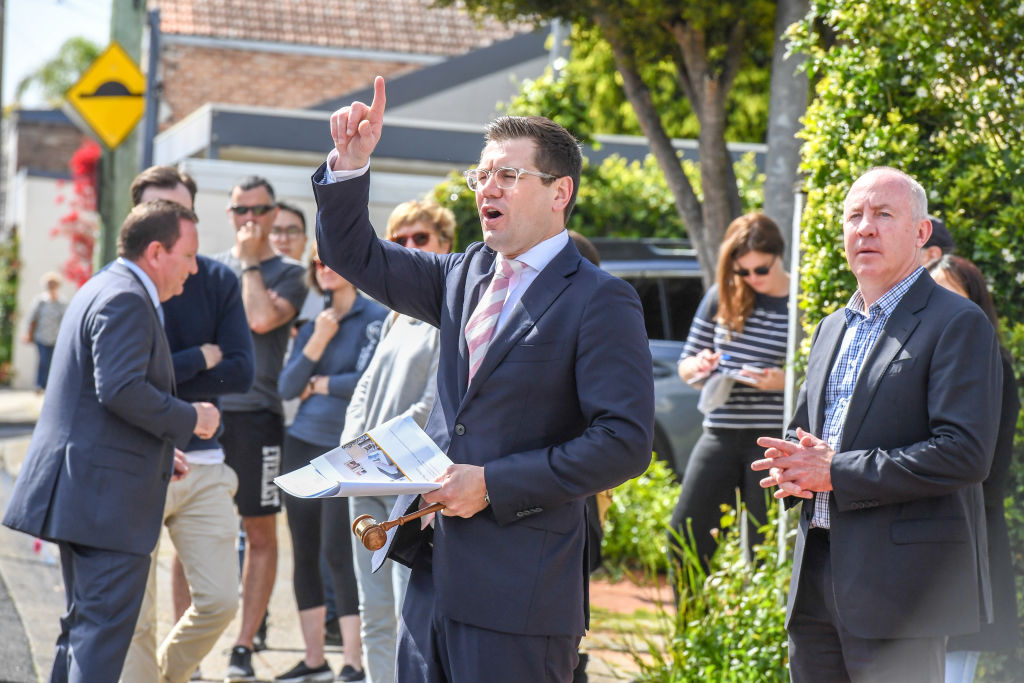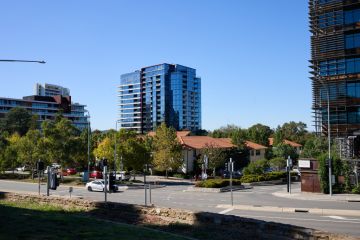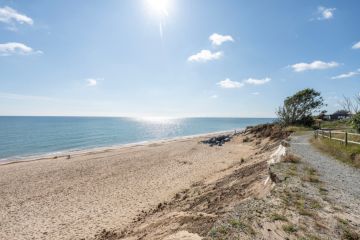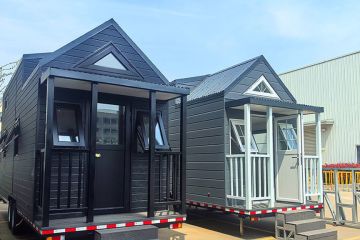Australian property prices set to turn a corner in 2019, new modelling suggests

After a tumultuous 12 months for Australian property, the market looks set to turn a corner in 2019.
Domain’s new Property Price Forecast report looks at how prices have changed in response to drivers such as population growth, interest rates, bank lending, unemployment rates and market sentiment. The modelling then forecasts the most likely scenario for capital city property prices over the next two years.
The most likely scenario – according to our forecasts – is that Australian house prices will keep falling in the first half of 2019 before turning around and growing modestly, resulting in growth of about 1 per cent in 2019. Prices are then forecast to increase another 4 per cent in 2020. In total, median house prices are predicted to fall by about 7 per cent from their peak of $820,000 in December 2017 to a low point of about $760,000 in mid-2019. At this low point, Australian house prices will be back where they were in 2016.
Unit prices are expected to hold up better than houses. We forecast unit prices to grow by about 2-3 per cent a year over 2019 and 2020. Unit prices are predicted to fall by approximately 5 per cent from their peak of $568,000 in June 2017. At this low point of around $540,000, unit prices will be back at their 2016 level.
Click here for the complete Property Price Forecast report
| House price forecasts* | |||
| 2018 (estimate) | 2019 (forecast) | 2020 (forecast) | |
| Australia (combined capitals) | -6% | 1% | 4% |
| Sydney | -8% | 0% | 4% |
| Melbourne | -9% | -1% | 4% |
| Brisbane | 0% | 4% | 5% |
| Perth | -5% | 5% | 3% |
| Adelaide | 2% | 2% | 2% |
| Hobart | 12% | 2% | 2% |
| Canberra | 2% | 4% | 4% |
|
* Annual change to December quarter Notes: Darwin excluded from forecast due to small volumes and market volatility. Stratified median house price forecasts. | |||
| Unit price forecasts* | |||
| 2018 (estimate) | 2019 (forecast) | 2020 (forecast) | |
| Australia (combined capitals) | -3% | 2% | 3% |
| Sydney | -3% | 3% | 5% |
| Melbourne | -1% | 1% | 1% |
| Brisbane | -6% | 3% | 3% |
| Perth | -6% | 2% | 2% |
| Adelaide | -1% | 2% | 2% |
| Hobart | 0% | 0% | 3% |
| Canberra | -5% | 2% | 2% |
|
* Annual change to December quarter Notes: Darwin excluded from forecast due to small volumes and market volatility. Stratified median unit price forecasts. | |||
Tighter lending conditions brought on by the Australian Prudential Regulation Authority, combined with more cautious banks following the bruising royal commission, saw lending drop and prices decline in most markets. Investor sentiment has also declined, with the Reserve Bank noting that demand for credit from property investors has waned.
What then followed was a mismatch between sellers’ expectations of their home’s worth and buyers’ capacity (and willingness) to pay. As a result, clearance rates plummeted to less than 50 per cent in Sydney and Melbourne, although recent analysis suggests a growing proportion of deals are getting done post-auction.
However, banks and potential borrowers should adjust to the “new normal” of stricter lending standards in 2019, resulting in mortgage lending starting to grow again (although at a slow pace). This should see price falls bottom out and should also lead to an improvement in market sentiment, which is an important driver of prices. Also supporting house prices will be continued strong population growth, lower unemployment, a pick-up in wage growth and increasing first-home buyer activity due to improved affordability.
Sydney and Melbourne house prices are predicted to bottom out and stabilise in 2019 after significant declines in 2018. The falls we expect to see by mid-2019 will be the largest since the late 1980s. But it’s worth remembering these falls have come on the back of an extraordinary period of rapid growth.
After growing 85 per cent, Sydney house prices are predicted to fall by about 12 per cent from their peak of almost $1.2 million in 2017. Melbourne house prices are predicted to fall by about 11 per cent from their peak of $910,000 in 2017, after a run that saw prices surge 65 per cent. At these new low points, prices in Sydney and Melbourne will be back at 2016 levels.
Unit prices in Sydney and Melbourne are expected to increase by 3-5 per cent in Sydney and 1 per cent in Melbourne over the next couple of years.
In recent years, unit prices haven’t surged as much as houses, so we expect the peak-to-trough for apartment values to be smaller. We also expect stamp duty concessions to help hold up unit prices in Sydney and Melbourne.
After years in the doldrums, we forecast Australia’s fastest growing capitals will be Brisbane and Perth, with prices expected to grow at 3-5 per cent over the next couple of years.
On the flip side, we expect Hobart’s remarkable run to end. With prices skyrocketing by 40 per cent between 2016 and 2018, our forecast is for the city to grow by about 2 per cent over the next two years.
The forecasts are our view of the most likely scenario for Australia’s capital cities. However, some things could push prices lower than we predict.
Mortgage rates could rise earlier and faster than expected, banks could tighten lending further following the royal commission’s recommendations, immigration may be cut back, there could be some forced selling by investors and there is a growing risk of a slowdown in the Chinese economy. On the other hand, a possible decline in housing construction, government intervention to support the market and a stronger economy could mean price growth is stronger than we forecast.
The impact of Labor’s proposed changes to negative gearing is more uncertain. While most experts agree the policy will push prices lower, if Labor implements the policy in 2020 it may actually encourage some investors to buy in 2019 and 2020 to take advantage of the grandfathering of existing investments. And as Labor is favourite to win government in 2019, investors may have already “priced in” the effect of the negative gearing changes, which may have contributed to some of the price weakness in 2018.
One thing for sure is that owners, investors and would-be buyers will all be watching the market closely for signs of a turnaround.
We recommend
We thought you might like
States
Capital Cities
Capital Cities - Rentals
Popular Areas
Allhomes
More






